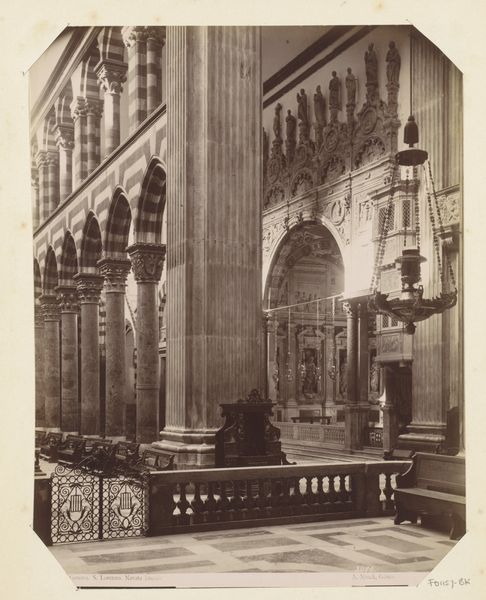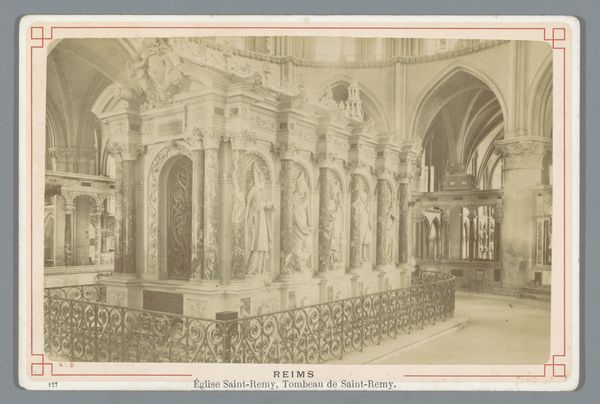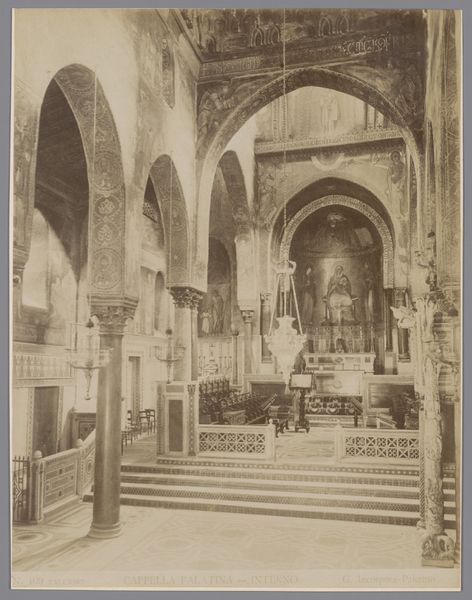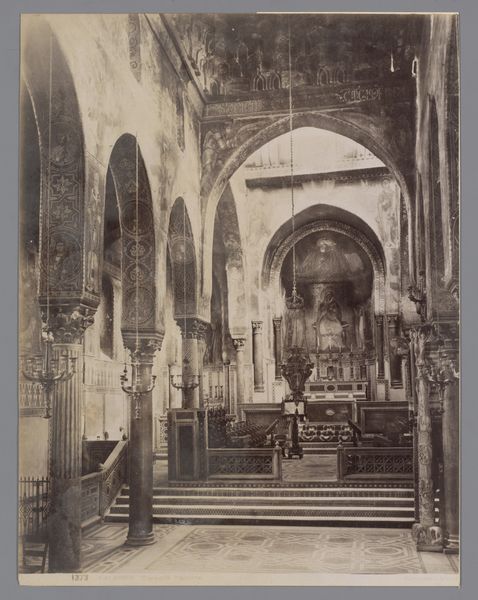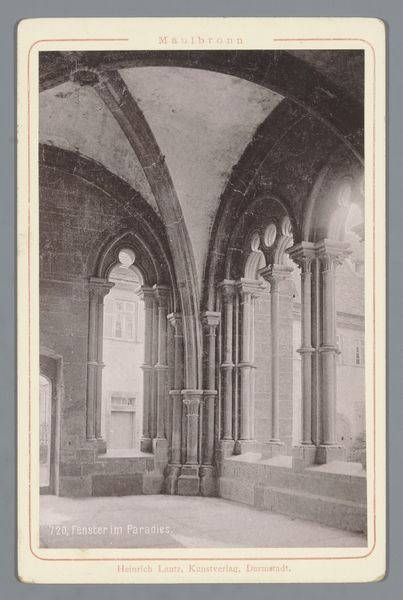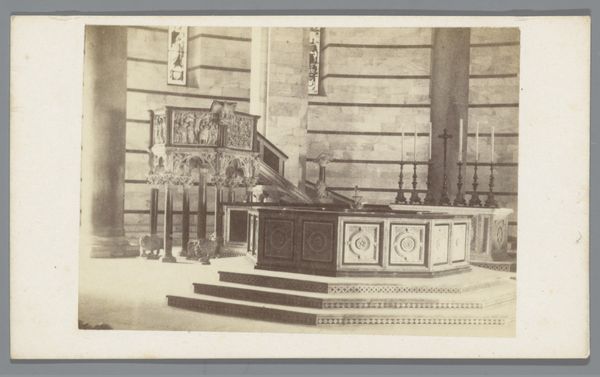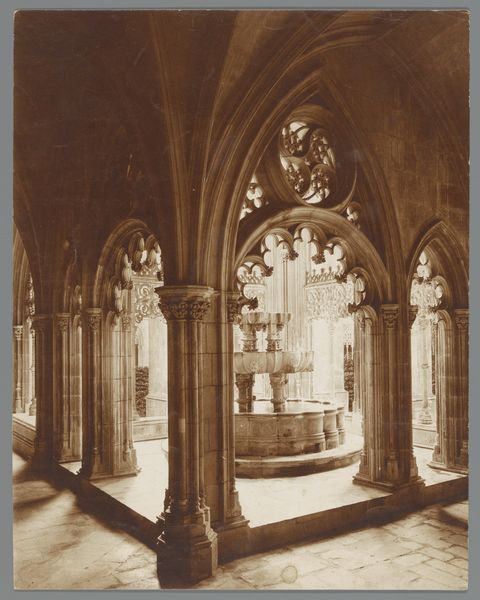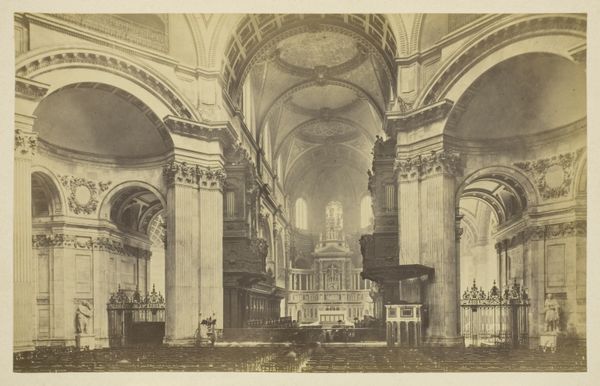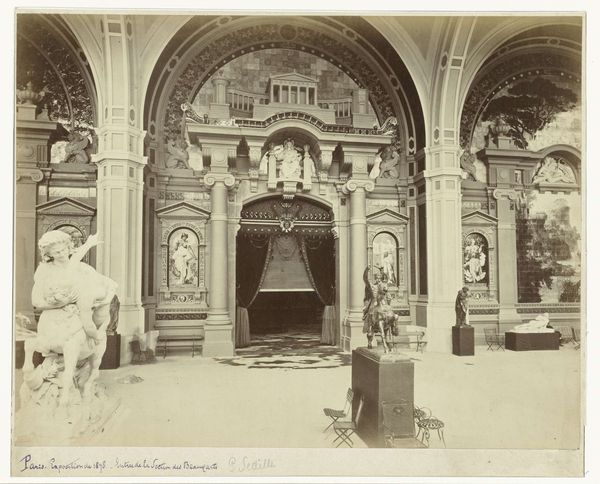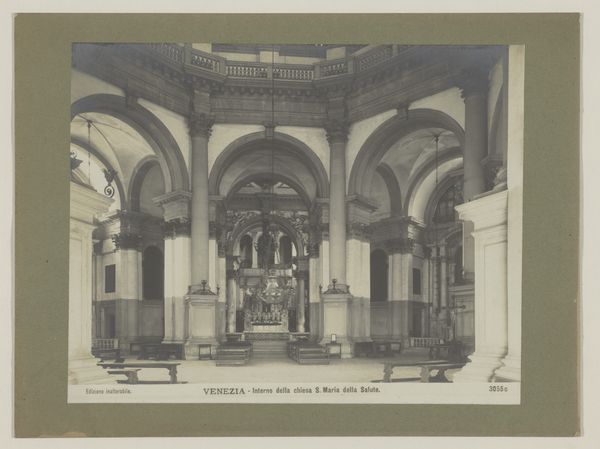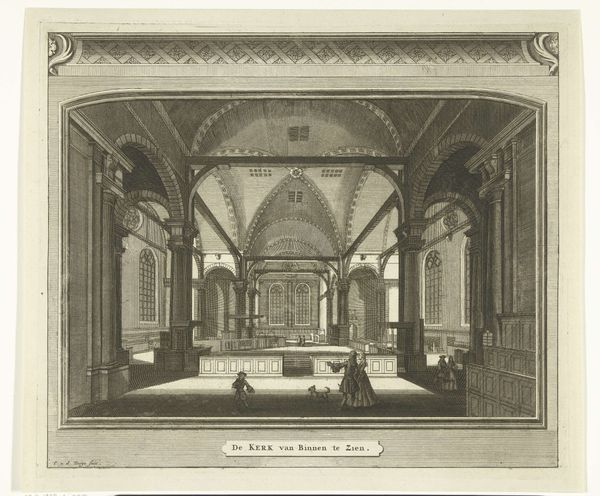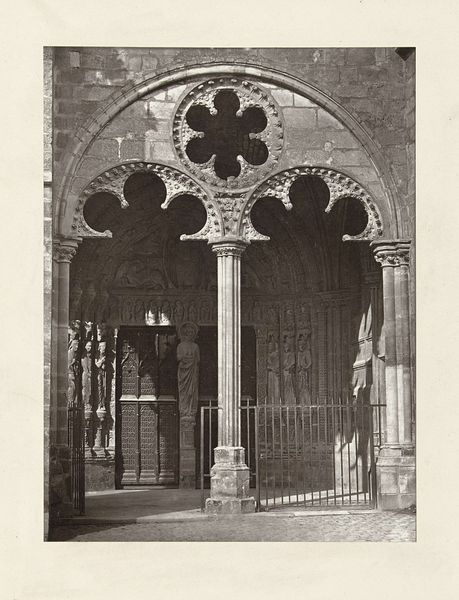
photography, gelatin-silver-print, architecture
#
charcoal drawing
#
photography
#
ancient-mediterranean
#
gelatin-silver-print
#
architecture
Dimensions: height 102 mm, width 148 mm
Copyright: Rijks Museum: Open Domain
This photograph of the chapel in Wartburg Castle, in Eisenach, was created by Georg Jagemann sometime in the 19th century. The architecture of the chapel, with its rounded arches, painted figures, and ornamental details, evokes the Romanesque style that flourished in Europe during the Middle Ages. Yet Jagemann's photograph emerges from a later cultural moment, the 1800s, when many Germans felt a deep sense of national pride in their medieval past. The Wartburg held particular significance as the site where Martin Luther translated the Bible into German in the early 16th century, a key moment in the development of Protestantism and the standardization of the German language. Wartburg Castle thus became a site of pilgrimage and national memory in the 19th century. Looking at archives and historical sources can tell us more about the importance of this site to Germans and their cultural identity during this period.
Comments
No comments
Be the first to comment and join the conversation on the ultimate creative platform.

